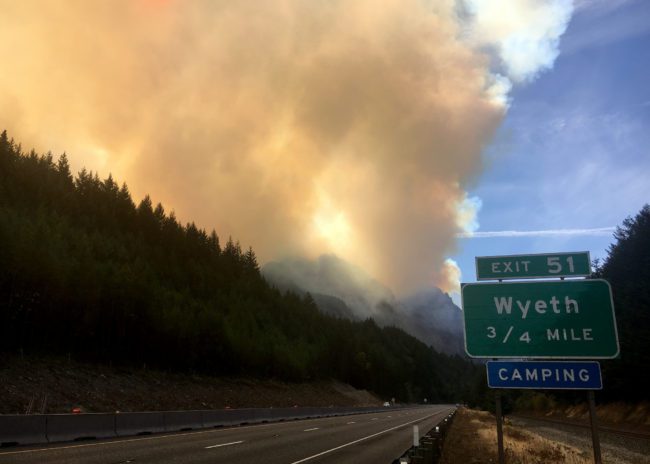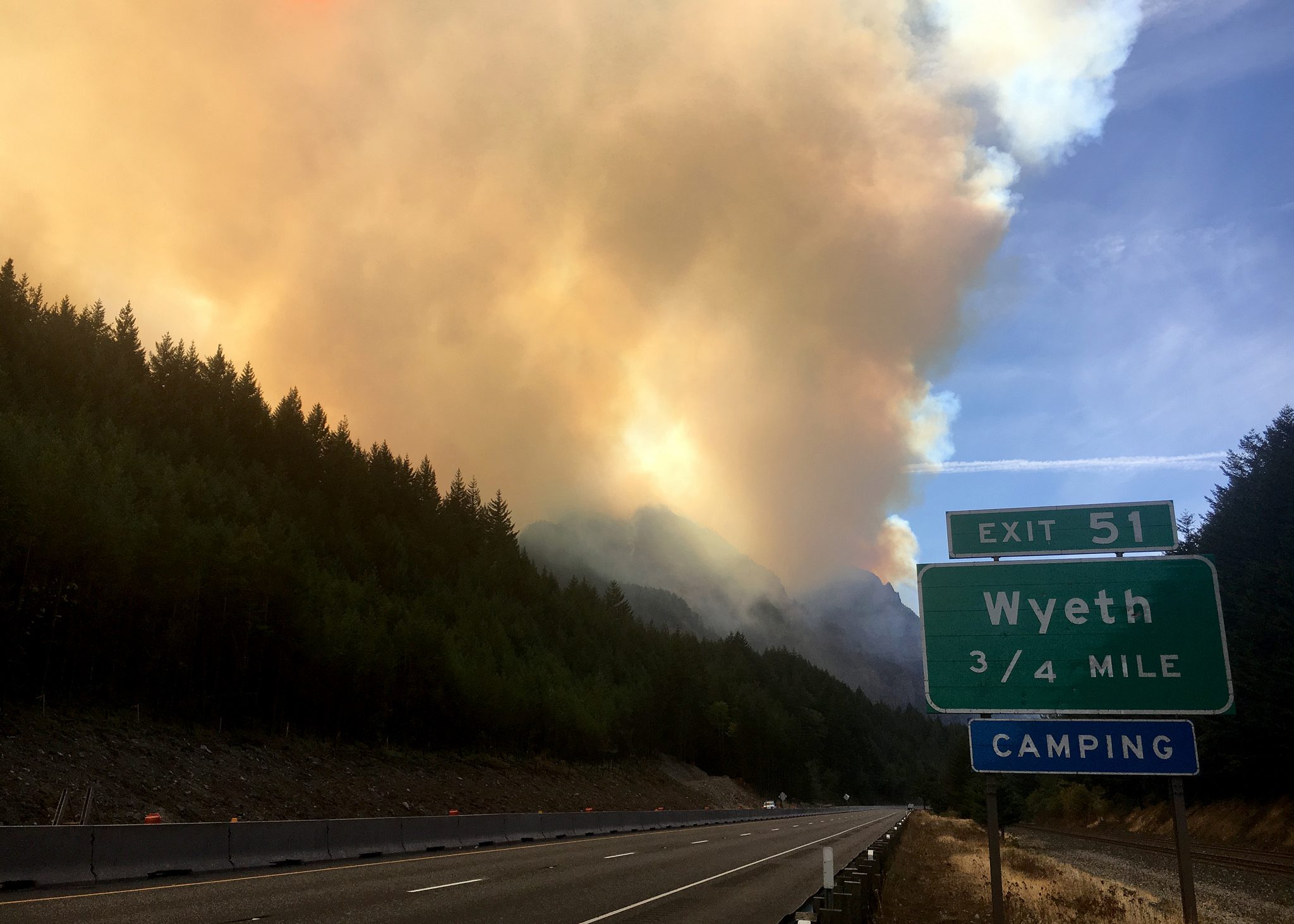
In Portland, Oregon, the air quality was rated the worst in the United States on Sept. 16, 2017. However, the Department of Environmental Quality (DEQ) reports residents in Oregon will breathe easier soon.
After months of unusually high temperatures and wildfires, it seemed Portland might have a break. The weather cooled, hinting at Autumn in the air. The smoke from the Eagle Creek fire, in the Columbia River Gorge (the Gorge), appeared to dissipate. Then the winds shifted west, and once again, the Air Quality Index (AQI) in Portland rose significantly.
The Gorge fire started mid-afternoon on Sept. 2. Over 45,000 acres have been scorched, and it is only 32 percent contained. The smoke from this fire increased the dismal air quality, which was already poor from the fires in Washington state and Vancouver, British Columbia.
On Sept 17, cooler air and overcast skies seem to have eased breathing. Nevertheless, residents with lung disease, breathing difficulties, seniors and children should remain indoors as much as possible until the AQI threat is lifted.
The National Weather Service (NWS) issued an exclusive statement for the greater Portland metro area, that indicates that the region is expecting several rounds of rain coming from a low-pressure system moving south from Alaska. The snow level is supposed to drop to 5,000 feet by Monday and remain at that level throughout the week. The Gorge is 4,960 feet. Therefore, the area may only receive flurries.
Rain will likely lower the amount of smoke in the air, but not enough to affect those with breathing issues until the Eagle Creek fire has been extinguished. With the containment at only 38 percent, it will take a massive storm to smother the flames.
According to The Oregonian, a spokesman for the U.S. Forest Service stated:
It is going to dampen the fire and in many cases, it’s going to go a long way to putting it out, especially along with edges in the high country where we’ve been reluctant to put people.
They are removing equipment from the area for a few reasons. The first is the anticipation of the rain’s assistance reducing the fire. Second, the terrain is questionable and likely to become too mucky for later removal. The third is that landslides are possible in the unstable topography of the Columbia River Gorge.
Steven Sobieszczyk, a U.S. Geological Survey hydrologist in Portland, explained that the Gorge’s landscape of steep rocky hillsides, the moderate amount of ground cover, and its canopy all contribute to the ongoing potential for landslides. That was before the fire, which has further disrupted the terrain.
He pointed out the epic 1996 landslide that destroyed a home south of the Cascade Locks in the heart of the Gorge. The house remains uninhabitable to this day. It is a reminder of the power of land, rock, and debris.
Portland residents hope that the rain will help keep the AQI at safe levels. That remains to be seen since the forecasted storms have yet to begin. The sooner the fire dies, the quicker Mother Nature can start the arduous task of recovery. Not only will it help the vegetation begin its regrowth process, which takes a minimum of 3-4 years, but it will make breathing the air easier.
By Cathy Milne
Sources:
The Weather Channel: Special Weather Statement for Greater Portland Metro Area, Oregon
The Oregonian: Will rain help or hurt Eagle Creek fire in the Gorge? It’s complicated
The Oregonian: Smoke leaves air quality poor in Portland, but it’s on its way out
KATU News: Portland has worst air quality in U.S.; entire area measures ‘unhealthy’
Featured and Top Image Courtesy of Oregon Department of Transportation’s Flickr Page – Creative Commons License



